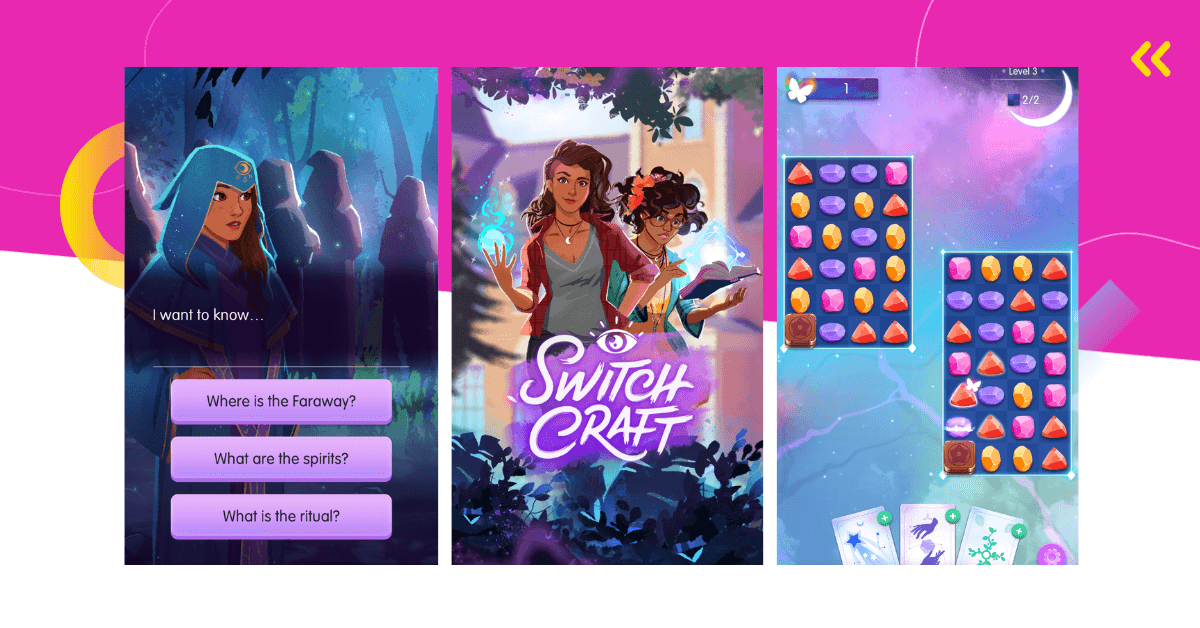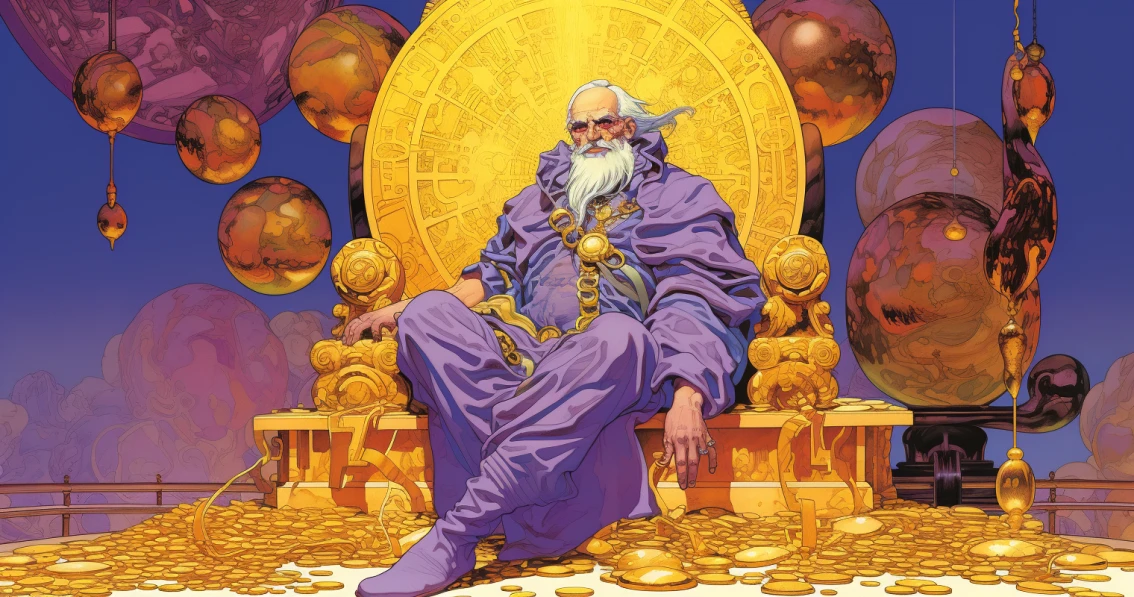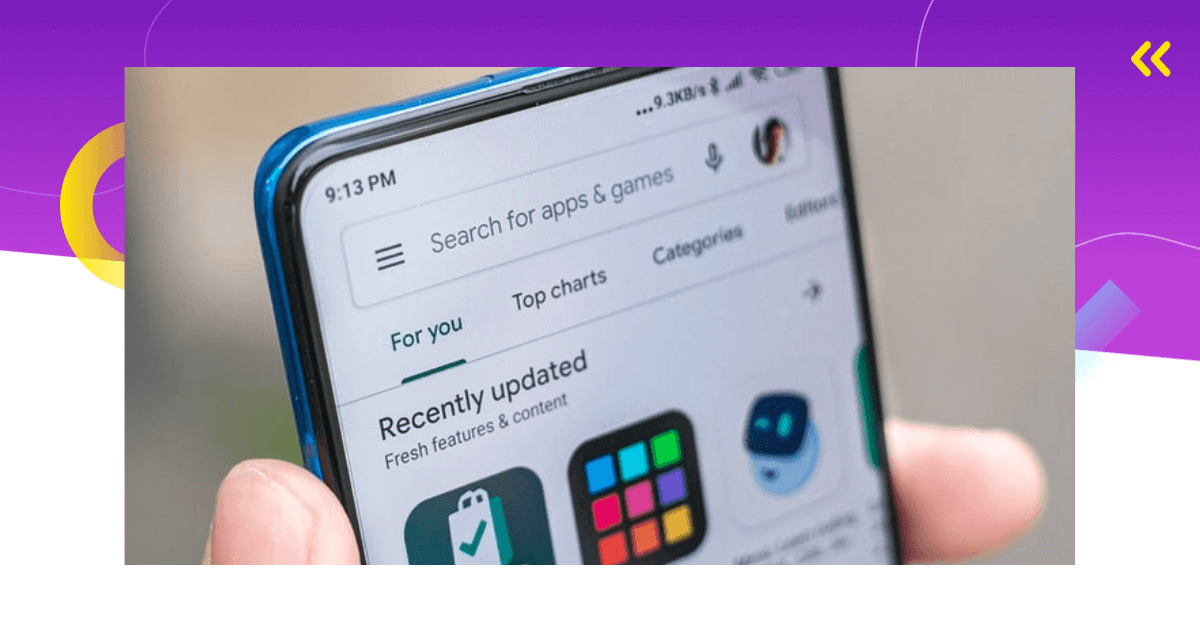Are you one of those people who think all match-3 games are just more of the same?
Switchcraft, a new title on the market, may change your mind.
In this article, I’m analyzing this game, with a special focus on Switchcraft monetization strategy. This includes the game’s monetization models, as well as the way the players experience them.
Let’s get started.

Switchcraft – Next Big Match-3 Title?
Switchcraft is a bright new entrant in the casual/puzzle market. The game was launched globally in October 2021 by a Playtika-owned studio, Wooga.
According to the studio, this is a casual game that combines interactive and narrative storytelling with match-3 mechanics.
Wooga is new to the match-3 environment, but it’s well-familiar with story-based games. The studio is most famous for its successful hidden objects game, June’s Journey. Just like Switchcraft, this game also puts a big emphasis on the narrative.
The studio has been developing Switchcraft for four years. This is much longer than what it usually takes to create most mobile games. It tells us that the studio has invested a lot of effort into this game.
But will all that effort pay off?
We have yet to see.
At the moment, the game has been on the market for over a month. It has gotten over 101 thousand downloads and more than $110 thousand in revenue on iOS alone (GameRefinery). On the Google Play Store, the game has also gotten to over 100 thousand downloads.
The results are not spectacular, but they are good.

Right now, this game is getting the most traction because of its diversity and inclusivity. The game’s cast of characters is incredibly diverse – they represent different genders and races. Moreover, the game features various nationalities, sexualities, and disabilities. This also makes a great selling point for the game’s user acquisition campaigns.
In this article, my main focus won’t be on how the game acquires players but how it makes money off them. Let’s take a look at all the different aspects that impact Switchcraft monetization strategy.

First-Time User Experience ()
Switchcraft begins with its strongest asset – the narrative.
First, the game introduces players to a female protagonist. Her name is Bailey, and she’s a witch that just enrolled in a witchcraft academy. This may remind players of another familiar wizard and school of magic – Harry Potter and Hogwarts.
Soon after, there is a plot.
The protagonist had a strange vision of her best friend being trapped in a frozen lake. Spooky. In this vision, the game asks players for a simple interaction (scrub away ice to reveal what happens). This is done so players would feel more invested in the narrative.
This plot works as the game’s hook. If players get intrigued by it, they will want to know what happens next.
After the vision, the protagonist is brought back to reality. She tells her friend everything, and they decide to meditate together to experience and see the vision again.
In this case, meditating stands for solving match-3 puzzles.

Game Tutorial
As soon as the players reach the match-3 board, the tutorial begins. The best friend is the tutorial character, and she teaches players how to play their first level.
For teaching purposes, the game uses written and visual instructions.
The written instructions are short and appear as small banners. This is a good practice because they don’t come off as intrusive. On the other hand, the visuals highlight what needs to be done. To make things completely clear, a pointer tells players exactly what to do.
This is the bare minimum the players need to get started.
The tutorial doesn’t stop here, though.
Players get instructions every time the game adds something new and unfamiliar. This type of tutorial is called a contextual lesson. It is spread throughout gameplay and teaches players how to react in certain situations.

UX/UI
In this game, the narrative and the match-3 core are almost equally important. For this reason, the two have to work together in perfect balance.
This must have been difficult to achieve, but the developers managed to do it right. The transitions are seamless, and the game is intuitive and simple to understand.
The user interface is well-arranged as well.
Most of the screen displays the players’ progress through the narrative. This feature looks similar to a saga map – a tried and tested concept in puzzle games.
Some other features on the screen are the match-3 level button, the game’s store, and a rewards section. Even though there are plenty of features on the home screen, they aren’t cluttered.
It is noticeable that the game wants players to focus on the narrative. For this reason, it takes up the majority of space on the home screen.
How Does Switchcraft Work?
Curious about how Switchcraft combines its match-3 core and the interactive story meta-layer?
Here’s how.
The match-3 levels work on a traditional, commonly used principle. Here are some of their characteristics:
- Swapping match-tiles
- Completing goals
- Limited moves
- Level competition rewards
Now, what motivates players to engage with the match-3 levels in the first place?
Players need to play match-3 levels in order to earn the game’s currencies – coins and magicka.
The magicka currency works like a key that unlocks the game’s narrative. This narrative consists of chapters divided into smaller sections – books. Every time players beat a match-3 level, they earn access to one of the books.
On the other hand, coins are needed on the match-3 board.
Finally, like in most puzzle games, the game also includes lives. Players need to have enough lives to start a level on the match-3 board.

The Meta Layer
This game comes with an immersive story that takes players into a mysterious world of witches and wizardry.
As I’ve mentioned earlier, the young witch protagonist has a vision that something will happen to her best friend. Later on, this actually happens – the friend goes missing. Many of her colleagues, friends, and professors go on a quest to find the missing witch.
Sure, a lot of games have great stories like this one.
We have seen plenty of match-3 games with narrative meta layers. For example, Homescapes and Project Makeover.
However, in most of these titles, storytelling comes down to reading lines.
Not in this game.
In Switchcraft, the storytelling is interactive. This is something we haven’t seen among the top match-3 titles yet.
As such, the storytelling meta layer plays a huge role in the game.
Interactive storytelling allows players to make choices that influence the flow of the story. Also, the players’ choices affect their relationship with other characters.
For example, the players need to decide if they can trust a certain professor or a fellow student. This makes the players feel important and more invested in the story.
The interactivity doesn’t stop here.

As a part of the narrative, players also need to take specific actions. For example, cast a spell, scrape something off, or put some parts together. All of this helps boost the players’ immersion into the story.
Just like most interactive novel games, the story comes in the form of short story pieces – books. Each one of these books ends with a cliffhanger. For example, with a new clue or a sudden scream.
This leaves players craving for answers. And the only way to get to these answers is to play the game some more.
Switchcraft Monetization Strategy Breakdown
At its core, Switchcraft is a puzzle game. As such, it attracts a lot of players who enjoy solving match-3 puzzles.
Then again, a lot of players play the game for other reasons.
One of these reasons is escaping the real world. Thanks to its magic narrative, this game is the perfect escape destination.
Some players are attracted to the game because of its interactive novel features. These players like how their actions affect the gameplay.
All of this opens up a lot of monetization possibilities. At the same time, it creates the challenge of monetizing all these different players.

Which Monetization Models Does Switchcraft Use?
Just like the game’s app store listings say – Switchcraft monetization is a blend of in-app purchases and in-app ads.
Which one of these is the primary monetization model? How does it work exactly?
Keep reading to find out.

Switchcraft Monetization: In-App Purchase Strategy and Setup
In-app purchases are Switchcraft’s primary source of income.
As I mentioned before, the game’s economy consists of two currencies, coins and magicka.
Coins are the game’s premium currency. This means two things:
- This is the only currency players can buy with real money
- By using coins, players can progress through match-3 levels faster
When players play match-3 levels, they can get stuck. For example, they might run out of moves. Or they can come close to making it but need the help of a booster. With coins, they can buy their way out of both of these situations.
Players can find packs of coins in the in-game store.
They can choose between six different packs from $1.99 to $74.99. This number of offers is the industry standard.
Three of these offers are in the $10 pool, which is good because most players aren’t willing to spend a fortune on a single purchase. Sales data by Sensor Tower proves this – the game’s best selling offer is a $1.99 pack (App Store, US).
Besides these offers, the store also includes two bundle offers. Their names, Freshman Kit and Sophomore Kit, follow the theme of the game. This is an example of well-done monetization messaging.
The bundle deals are low-priced but offer more than the standard offers. Players can see both sections on the same screen, and compare their prices. The chances are, if they want better value for money, they will pick out the bundles.
How In-App Purchases Really Work in Switchcraft?
It’s difficult to talk about a game’s monetization strategy just by looking at it.
For this reason, I’ve put myself in the players’ shoes and played the game for five days.
Let me guide you through my playing diary and what I learned about Switchcraft monetization strategy.

Days One & Two
I’m not the best match-3 player in the world.
However, the first two days of playing this game made me feel like one. The levels were easy to pass, and I didn’t stumble upon any obstacles. As a result, I unlocked new books in the narrative with ease.
In other words, I enjoyed the game to the fullest.
The game felt completely free to play. At this point, I didn’t even understand the purpose of the premium currency.
This is how great games handle first-time user experiences. They allow players to explore the game and make them feel happy and rewarded.

Day Three
It wasn’t until level 12 when I first faced some minor obstacles on the match-3 board. When this happened, the game gave me two choices:
- Buying five extra moves by using coins
- Giving up and spending a life point
I decided to buy the extra moves, and I had to do it twice. Just like that, the stash of coins I got at the beginning was almost gone.
At this point, the game starts introducing players to its monetization features. Also, this situation makes players understand the value of the game’s premium currency – coins.
Every time they pass a level, players earn a small amount of coins. However, the amount they need to buy extra moves is much higher. For this reason, this is the point where people should start considering making purchases.

Day Four
After being stuck in the game for the first time, I expected this to continue happening.
But it did not, at least not for the next couple of levels.
In fact, compared to most of the match-3 games I played in the past, the levels were suspiciously easy.
I didn’t even need to use the free boosters the game gave me. Nor the ones I earned by watching rewarded video ads (more on that later).
All of this lasted until level 19, when I ran out of moves again. Unlike the last time, now I couldn’t afford extra moves. However, the free booster samples came in handy and helped me complete the level on my second try.

This type of situation teaches players about the value of boosters. These items help players finish the levels faster.
Thanks to the free booster samples, all players get to try them out. Therefore, the next time they face a difficult level, some players will crave boosters.

Day Five
My long fifth-day session was pretty surprising.
Even though I went all the way to level 30, I was able to pass all levels with ease. In other words, the game gave me zero reasons to spend.
However, I have noticed one significant monetization tweak.
I visited the game’s store and found out that the game has added five new bundle deals to the store. When I first started playing, there were two – Freshman and Sophomore Kit.
The new bundles had names like Senior Kit, Graduate, and Professor Kit. As you can see, the names reflect different college roles, less and more experienced ones.
These bundles appeared because, at this point, the players feel more experienced. Therefore, the new bundle deals may be more appealing for the players.
Now, the not so good.
The game didn’t notify the players about the new offerings at all. Not even with a notification next to the store icon. Instead, it relies on the players’ intention to visit the game’s store. However, since the levels are so easy to pass, this will hardly happen.
Switchcraft In-Game Ads
Sure, paying players are the ones who drive the game’s revenues.
However, non-payers bring in some yield to the game as well.
Switchcraft decided on the players’ favorite ad format – rewarded video ads. Let’s take a look at when and how ads appear in this game and how they blend into Switchcraft monetization strategy.

Rewarded Video Ad Placement
Switchcraft doesn’t introduce players to ads right away. Instead, this happens when they become more engaged with the game. More precisely, when they complete level 11.
This is a critical moment for one more reason – from this point on, the levels become a bit more challenging.
The new feature appears in the game’s Dorm section. The game introduces players to it with tutorial instructions.
In the characters’ dorm room, there is a plant. The plant has a special name – the magicka plant. Obviously, this is because it produces magicka, one of the game’s currencies. For this to happen, the plant needs water.
To water the plant, players need to watch a rewarded video ad. After watching the ad, players receive a random reward. This is either magicka, or one of the boosters for the match-3 board.
Players can watch more than one video ad a day. In fact, they can watch an ad every ten minutes.
It’s good that the rewards from watching the ads are diverse. One type of reward is for players focused on the narrative (magicka). On the other hand, boosters can help players stuck on the match-3 board.
For this reason, both types of players are motivated to engage with the ad placement.
Another good thing about the placement is that players can’t watch multiple ads at once. Instead, they need to come back after the ten-minute timer disappears. This is a great incentive for players to return to the placement.

User Retention in Switchcraft
No matter how good a game or its storyline is, retaining players is always a challenge.
According to Nai Chang, Wooga’s managing director, they had to make some tweaks to boost the game’s retention rates. The thing is, in the soft launch phase, they weren’t satisfied with the retention results.
For this reason, they subsequently added some additional elements to make the players hooked to the storyline.
Obviously, these elements made a difference. We don’t know which elements this refers to exactly. However, it’s not difficult to spot some of the game’s main retention factors. This includes:
- The storyline
- Interactive parts of the narrative
- Sending out relevant push notifications
- Giving out daily rewards
All of these elements are very well incorporated into the game, as well as the story.
Retention-wise, the only obvious drawback is a missing social dimension. Almost all games should find a way to profit from social features.
This game is a blend of a match-3 game and an interactive novel game. For example, some games from these genres have social media connections, the character’s social media feeds, and some match-3 games even have guilds. These are just some of the possibilities.

Switchcraft Monetization: Key Insights
From a players’ perspective, this game offers a great experience. The levels are easy, there are no progression blockers or aggressive pop-ups, etc. This really feels like a free-to-play game. At least in the beginning stages.
However, what’s good for the players isn’t necessarily good for the developer.
The thing is, when players experience this, they don’t have a strong incentive to spend money on the game.
No, I’m not saying the game should go all-in with progression blockers. However, after a while of playing, the match-3 levels should get more challenging.
Only if the players struggle will they consider making purchases. Harder levels should make them want to buy extra moves or extra lives.
With the current approach, it looks like a lot of money is left on the table.
I’m guessing that the game earns the most money from players that stick around for over ten days. However, not many players will play the game for a long time.
Now, let me count some good things about the Switchcraft monetization strategy:
- Combining two monetization models (in-app purchases and in-app ads)
- Not using progression blockers
- Not having an aggressive IAP strategy
- A rewarded video ad placement for engaged players
- The meta layer supports monetization
Wrapping up on Switchcraft Monetization Strategy
To sum up, the Switchcraft monetization strategy seems to have plenty of unused potential. The game is still new to the market, so I’m excited to see if the developers will introduce some significant changes in the future.
Care to read more monetization analyses like this one? Check out our other mobile game dissections.







Comments